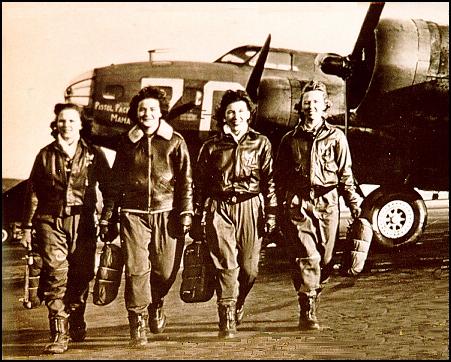|
Women served with distinction in the AAF, replacing men who could then be reassigned to combat and other vital duties. The Women's Army Auxiliary Corps (WAAC) was created in May 1942. Top priority for assignment of WAACs was to serve at Aircraft Warning Service (AWS) stations. In the spring of 1943, WAACs became the Women's Army Corps (WAC); almost one-half of their peak strength served with the AAF, with many being assigned to clerical and administrative duties, while others worked as topographers, medical specialists, chemists, and even aircraft mechanics. Some commanders were relucant to accept women into their units, but by mid-1943 the demand for them far exceeded the numbers available. Other women served in the Army Nurse Corps and were assigned to the AAF. Since nursing was a traditional field of employment for women, they did not have to endure the ridicule suffered by some who pioneered in occupations which had been exclusively male prior to WW II. By 1944, some 6,000 nurses were on duty at AAF station hospitals while 500 were flight nurses aiding in the air evacuation of the wounded. Flight nurse duty was voluntary for their work was strenuous and sometimes took them within range of enemy fire, but the risk was justified by the reduced death rate and increased morale among the wounded. |
 |
 |
In Sep. 1942, the Women's Auxiliary Ferrying Squadron (WAFS), composed of women flyers with commercial licenses, was activated under Mrs. Nancy Harkness Love to ferry aircraft. Almost simultaneously, the Women's Flying Training Detachment was created under the leadership of the famed aviatrix Jaqueline Cochran to recruit and train women pilots for ferrying duties. On Aug. 5, 1943, the two organizations merged into a single unit, the WASP, with Miss Cochran as Director of Women Pilots. Members of the WASPs were civil service employees. WASPs were given the same flight instruction as male aviation cadets except they received no aerial gunnery training and little in formation flying or acrobatics. Originally, WASPs ferried only light AAF aircraft from factories to training bases, but eventually they flew fighters as well as four-engine bombers and transports. |
|
|
They also flew such noncombat missions as towing aerial gunnery targets, flying as practice targets for searchlight crews, and serving as instrument instructors. By Dec. 1944, the critical shortage of male pilots had ended and the WASP program was terminated. A total of 25,000 women had applied for WASP training. 1,830 had been accepted, and 1,074 had graduated and been assigned to flight duty. General H.H. Arnold once stated that it became common for commanding officers to prefer WASPs over male ferry pilots since the women pilots did not carry 'address books' and often reached their destination sooner than the male pilots. |
 |
|